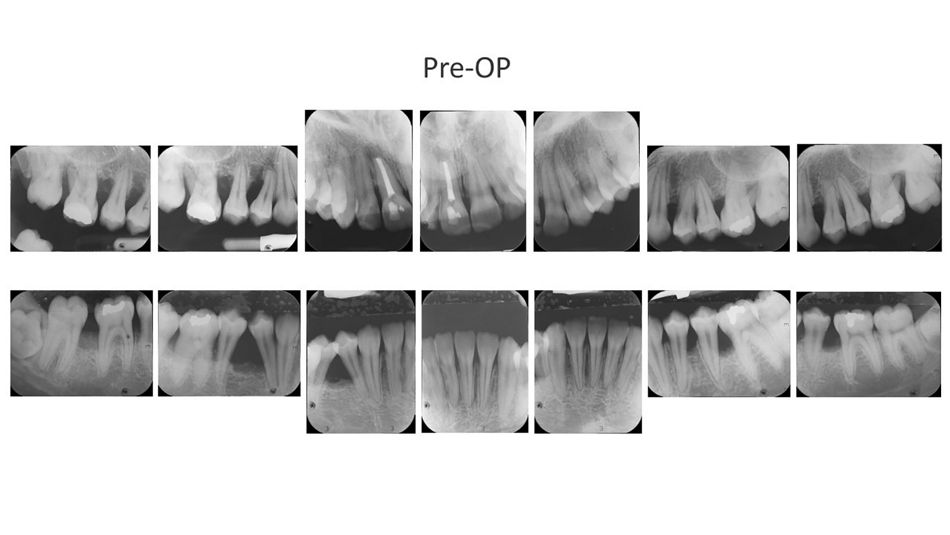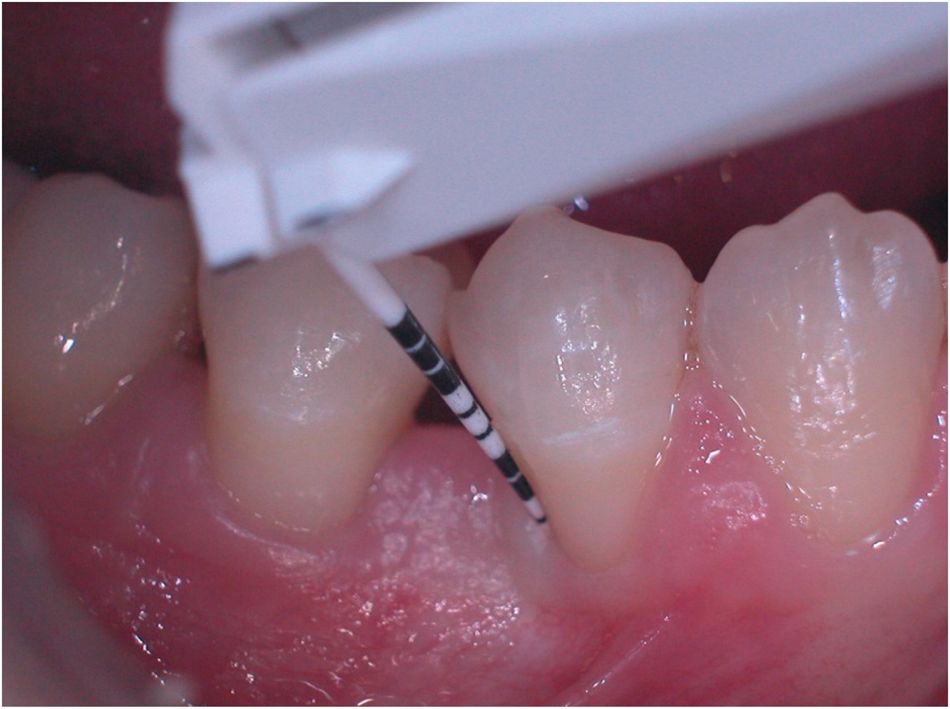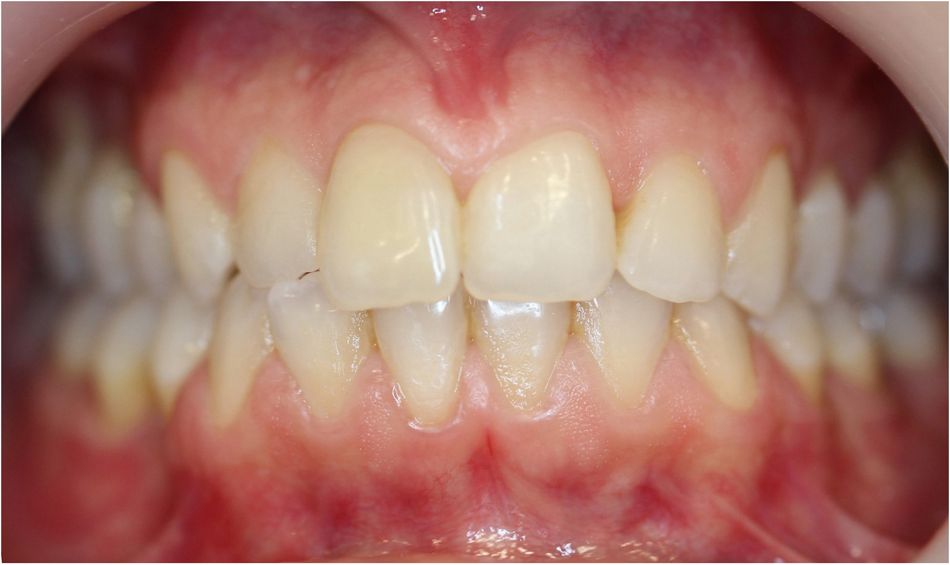
As we are going through post-pandemic times, how did the current situation impact your professional life?
At the beginning, in March 2020, everything was closed and I was able to provide only emergency treatments in the hospital. However, soon it was realized that delaying the therapy was even more harmful than trying to avoid the virus transmission, and the clinics re-opened. For a few months it was similar to changing a tire while the car was still moving – we did not know much about the virus and how it spread. But even so, our safety measures worked and only very few dentists were contaminated by their patients.
Do you think Covid-19 changed dentistry forever?
I don’t think so. It is not similar to HIV in the 1980s. After HIV, all dentists started to work with gloves! Now, we are only a bit more careful than we were before Covid-19, using long sleeves for example. The infection control was already very strict and we cannot be stricter than that.
You are currently Full Professor and Head of the Department of Periodontology and Dental Implantology in Tel-Aviv University. Have you always lived in Israel?
I was born in Montevideo, Uruguay. For those not acquainted with geography, Uruguay is a small country with a good football team, situated between Brazil and Argentina. Brazil is 45 times larger than Uruguay, while Argentina is only about 25 times larger by surface area compared to Uruguay, but we still challenge them during the Copa América.
My dentistry studies were finished in Montevideo, and I obtained my doctorate in Dentistry early, at 23 years old. A few years later, in 1980, I visited Israel for the first time, and I liked it so much that I’ve been living here since then. Accordingly, my Perio specialty studies were continued in Tel-Aviv University. I have lived most of my life in Israel, but still I speak very fluent Spanish.
“With implants it was like a pendulum: at some point many clinicians extracted teeth to place implants. Then, when implants started to have problems, the focus was back on saving teeth.” C. Nemcovsky
Is football then part of your childhood memories?
You cannot be brought up in Uruguay without a memory of football. All children play it, and football is an important part of kids’ lives until they are teenagers and other things take over. But that’s a different story 😊
And when did it become obvious that dentistry was your vocation?
My mother was a dentist and she had a practice at home. I was used to that, and even from young age I used to play as dentist and check my friends’ teeth problems. I can say that I felt like a dentist before becoming a dentist.
What were your first challenges as a student in the 1970s in Montevideo, Uruguay?
The first challenges were not in the basic studies since I liked anatomy and histology. But once I had to study the practical part and do cavity preparation of teeth, it was more difficult and too technical for me to like it much.
What determined you to take the academic path?
I always liked to research and look for things. In Uruguay there’s a system in which, if you finish a major, you can join the respective Department. I took part in this competition and became part of the Anatomy department, greatly enjoying the academic environment.
Looking back on your past research projects, which ones bring proud smiles?
The first real research projects were in Israel. Before that, in Uruguay, I only did literature research. In Israel, with my anatomy knowledge, I joined the Dental Anatomy department and focused on cranio-maxillofacial disorders. It was the most important field in dentistry at that time. My research continued in oral rehabilitation and, at a later stage, in periodontology.

Want to stay up to date?
youTooth.com is THE PLACE TO BE IN DENTISTRY – subscribe now and receive our monthly newsletter on top hot topics from the world of modern dentistry.
“Emdogain® changed the way we treat periodontal patients. It did not change the face of dentistry, but it changed the face of periodontology, no doubt about it!” C. Nemcovsky
What do you think is the secret of Straumann® Emdogain®’s success?
I’ll give you an example from my lectures. When we use membranes it’s like having a race between a turtle and a rabbit: the turtle can win if one ties the legs of the rabbit. And this is what we do from the cells’ point of view. We control the development of the fastest cell, to allow the slower one to reach the finish line. That was a mechanical or biomechanical concept. But there are problems with this approach: exposed membranes can lead to complications; we cannot treat horizontal or proximal defects and it works mostly for single intrabony defects.
When using Straumann® Emdogain®, you do not tie the legs of the rabbit, but you give amphetamine to the turtle to run faster 😊. The healing is enhanced and there are no complications. The key is knowing how to use the product. Our experience is very good – we have successful results and good healing. Although Emdogain® is not as technique sensitive as the membranes, you still need to know what you are doing. We have to bear in mind that the best device or material will never compensate for the lack of surgical skill or capability of the surgeon. So, you must know how to use it in order to achieve the best results.
One of the 100 publications that you have authored or co-authored is entitled “Twenty years of enamel matrix derivative: the past, the present and the future” (1) and was published 6 years ago. What can you tell us about your past experience with our 25 year-old product?
Emdogain® changed the way we treat periodontal patients. One of the questions I ask my students is: what are the most outstanding changes in dentistry during the last 150 years? Most say “implants!”, and I have to tell them to think far back, before implants and closer to the beginnings of dentistry.
The first big advancement was local anesthesia. And I then go on to ask: What was the second innovation that changed the face of dentistry? The answer is “acrylics”. Now, of course, we have composite materials, but these originated from the acrylics. Prosthetics was done with rubber or animal bone before acrylics.
As the third chronological innovation we can mention implants, because the way we used to treat patients before and after implants appeared is different. But after implants, the next advancement in dentistry was Straumann® Emdogain®, which drastically changed periodontal treatment. There are a lot of developments when it comes to surgical techniques, but the product’s formulation has been the same for more than 25 years!
I’ve just come from a large lecture where I presented cases that I could not have solved in the same way without enamel matrix derivative. Emdogain® allows us to preserve teeth that one would never have thought of preserving before. Therefore, Emdogain® changed the way we treat periodontal patients. It did not change the face of dentistry, but it changed the face of periodontology, no doubt about it!
“One of the questions I ask my students is: what are the most outstanding changes in dentistry during the last 150 years. Most say “implants!” and I have to tell them to think far back, before implants and closer to the beginnings of dentistry.” C. Nemcovsky
And, based on your biomaterials expertise, where do you see the future of Emdogain?
Finding different applications for the same product means thinking out of the box. I don’t know if the rest of the applications 25 years from now will remain as effective as Emdogain® used nowadays for periodontal reconstructions. We’ll see. Since Emdogain® enhances healing, we can use it in different situations such as implant surgery, perio treatments or bone grafting procedures. Thanks to Emdogain®, we are now able to treat patients who were previously considered untreatable. Of course, as a result, others have thought about creating something with a similar application as Emdogain®, but, so far without much success. Even growth factors like PDGF or BMP failed to achieve a similar result.
With implants it was like a pendulum: at some point many clinicians extracted teeth to place implants. Then, when implants started to have problems, the focus was back on saving teeth. And Straumann® Emdogain® helps when it comes to saving teeth!
How would you answer the provocative question about whether it is worth saving teeth?
If a tooth is extracted due to periodontal reasons, especially in young people, implant placement does not solve the issue. Nowadays we know that we are actually replacing one problem with another. Patients with a history of periodontitis from an early age have a higher risk for peri-implantitis. Such patients may start to experience peri-implant problems after 10 years, and implants will usually have to be retrieved and new ones placed due to bone deficiency. These cycles are very challenging for the patient and the treating clinician. On the other hand, today we know how to treat periodontitis, but don’t really know how to treat peri-implantitis.
What about the future of esthetic dentistry?
To me esthetic dentistry does not exist: it’s either good dentistry or bad dentistry. Implants are an excellent tool to replace teeth that have been lost or that we have been forced to extract. Tooth support is much more predictable than implant support. We never plan to fail, we fail because we do not plan.
You are in contact with clinicians from all over the world. What do you think dentists should do more and what less?
The main reason for tooth extraction today is the practitioner’s decision! A lot of teeth are extracted since the dentists are not fully acquainted with the possibilities of periodontal treatment. By trying to save the teeth, we could provide a much better service for patients, especially younger patients, even though the treatment will take time. My concept is that we should first try to preserve and decide to extract only if there are no alternative options to save the teeth.
Can you share with us one of the best pieces of advice that you received?
Yes, it’s something that my mother told me. When you have occlusive trauma there are three mechanisms that work together. One is the PDL, the second is the muscle and the last is the TMJ. Something must fail because a lot of forces are involved. Either you have the teeth that are gone, muscle tenderness, ground teeth or a temporomandibular joint problem. Something has to fail.
Would you like to share anything else with our readers?
We have several websites that can be visited. One of the best platforms would be Researchgate, where you can see who works with whom and what are the most recent publications. My last two recently published books are mentioned there. I would encourage your readers to approach me or my team and ask for the publications, since knowledge should be shared and transferring knowledge is important for me!
Advanced loss of periodontal support treated with Straumann® Emdogain® – 15-year follow-up clinical case
- Fig. 1. Peri-apical radiographic status of a 17-year old patient at the time of first periodontal screening. Note the advanced loss of periodontal support in the posterior areas in the four quadrants. Furcation involvement and radiolucency around the distobuccal root in the first upper molar are also evident.
- Fig. 2. Periodontal chart showing pocket depth, “+” sign indicates increased mobility.
- Figs. 3. Periodontal probing reveals PDs of 9 mm in the mesial view of the second lower right premolar and 8 mm in the distal view of the first.
- Figs. 4. Periodontal probing reveals PDs of 9 mm in the mesial view of the second lower right premolar and 8 mm in the distal view of the first.
- Fig. 5. After flap elevation, a mostly horizontal bony defect, with largely exposed root surfaces may be observed.
- Fig. 6. Application of Straumann® Emdogain®’s on the denuded root surfaces
- Fig. 7. The application of Straumann® Emdogain® on the denuded root surfaces was followed by placement of a bone graft.
- Fig. 8. Intra-operative clinical appearance of upper right posterior teeth shows advanced periodontal destruction with furcation involvement in the first molar.
- Fig. 9. Another intra-operative image of the upper right quadrant showing advanced periodontal destruction around the posterior teeth.
- Fig. 10. Application of Straumann® Emdogain® on the denuded root surfaces.
- Fig. 11. View of lower left quadrant following flap elevation and debridement, showing intrabony defects with different configurations; a one-wall defect is evident on the distal view of the first premolar.
- Fig. 12. View from a different angle of lower left quadrant following flap elevation and debridement showing loss of periodontal support.
- Fig. 13. 15-year postoperative follow-up: view of the lower right area showing slight gingival recession.
- Fig. 14. 15-year postoperative follow-up: view of the lower right area. Probing pocket depth is only 3-4 mm; compare with the preoperative situation as shown in Figs. 3, 4.
- Fig. 15. 15-year postoperative follow-up: view of the lower right area. Probing pocket depth is only 3-4 mm; compare with the preoperative situation as shown in Figs. 3, 4.
- Figs. 16. 15-year postoperative follow-up: radiographic status of the patient. Note largely improved bone architecture as compared to preoperative status (Fig. 17)
- Figs. 17. 15-year postoperative follow-up: radiographic status of the patient. Note largely improved bone architecture as compared to preoperative status (Fig. 17)
- Fig. 18. Fold-to-fold view of the patient 15 years after active periodontal treatment. Not a single tooth has been extracted.

Straumann® Emdogain® is a unique gel containing enamel matrix derivative of porcine origin. The main component is amelogenin, which has demonstrated the ability to stimulate certain cells types involved in the healing process of soft and hard tissues towards a regenerative pattern, thus leading to true periodontal regeneration1 and accelerated oral wound healing2. Emdogain® has a respected legacy as an irreplaceable tool for periodontology backed by extensive and long-term clinical documentation including studies with 10 years of follow-up3,4. Over the past 25 years it has been used in over 2.5 million patients5 and it is documented in over 1,000 scientific publications, including over 600 clinical papers6 on various indications. For more information: click here.

References:
1. Miron RJ, Sculean A, Cochran DL, Froum S, Zucchelli G, Nemcovsky C, Donos N, Lyngstadaas SP, Deschner J, Dard M, Stavropoulos A, Zhang Y, Trombelli L, Kasaj A, Shirakata Y, Cortellini P, Tonetti M, Rasperini G, Jepsen S, Bosshardt DD. Twenty years of enamel matrix derivative: the past, the present and the future. J Clin Periodontol. 2016 Aug;43(8):668-83. doi: 10.1111/jcpe.12546. Epub 2016 May 28. PMID: 26987551.


















